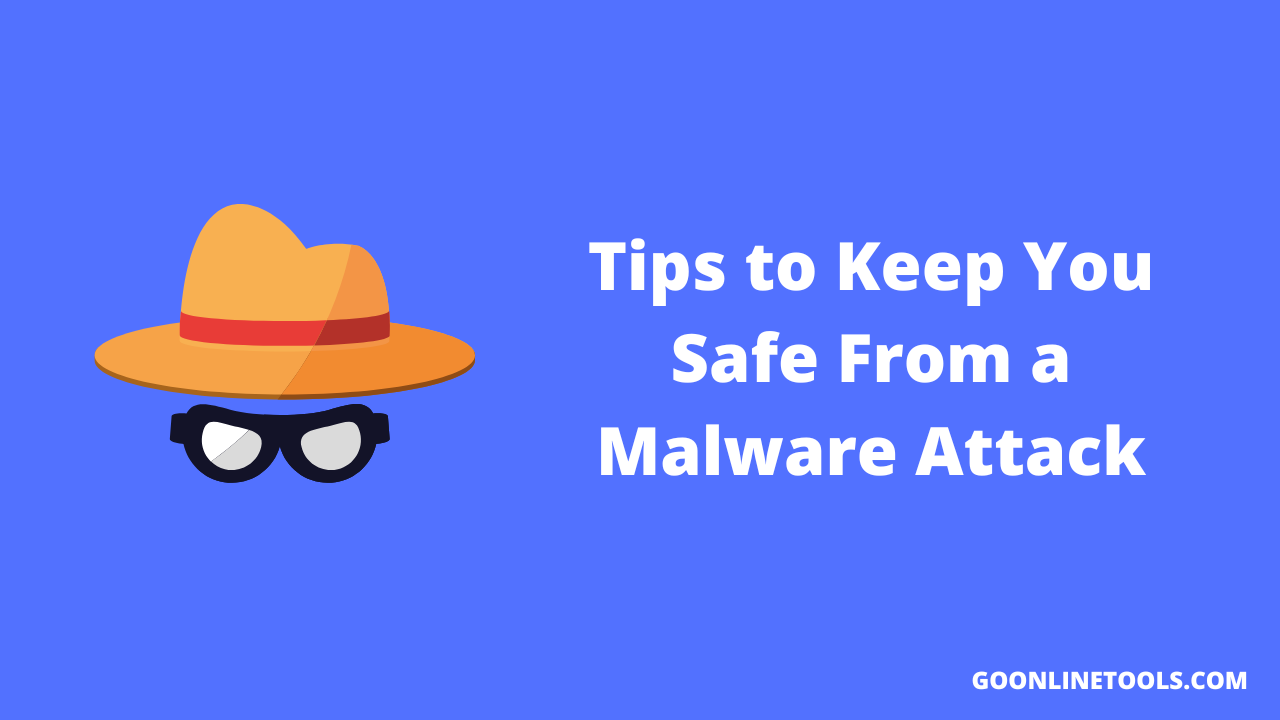
Featured image for "4 Simple Tips to Keep You Safe From a Malware Attack"
As you may know, malware is software that infects computer systems in order to disable, damage, or exploit the device or the network.
Cybercriminals’ intentions for using malware van vary. They could use it to steal, delete, or encrypt your sensitive information, hijack or alter the functions of core systems, monitor your activity without you knowing it, introduce spam or forced advertising, or extort money from you.
Malware can be distributed via things like email attachments, fake online ads, and infected websites or apps.
Thankfully, there are some simple ways to stay safe from malware attacks.

Types of Malware
Whether you want to run a profitable website or you use your devices purely for personal use, it is important you are aware of the most commonly used types of malware.
Cybercriminals often use:
- Adware, which automatically delivers ads to generate revenue.
- Backdoors, which enables cybercriminals to access your computer without your knowledge.
- Rogueware, which makes you think your device has been infected when it has not been and thereby makes you click on a fake warning that will install the malware.
- Ransomware, which restricts you from accessing a system or data until you pay a ransom.
- Spyware, which can enable cybercriminals to watch and listen to you via cameras and microphones as well as log your keystrokes to extract sensitive information.
- Viruses, which negatively affect the way your computer operates.
- Worms, which can replicate themselves without having to be attached to a program or run by a user, making worms one of the most dangerous types of malware.
Prevent Ransomware from Being Installed on Your Computer
There are several ways in which you can prevent ransomware.
For instance, cybercriminals often use phishing techniques. That involves sending emails that appear to be from reputable sources and which contain links that, once you click on them, will install the ransomware on your computer.
The cybercriminal will then ask you to pay a ransom to remove the malware.
You can simply avoid that by ensuring you never click on untrusted links. If you are unsure about the legitimacy of an email and link, always contact the company directly using an official communication method to find out whether the email is genuine.
By expanding your education and security awareness and knowing how to remove ransomware, you can further stay safe from this kind of attack.
Install Antivirus and Antispyware Software and Update it Regularly
To stay safe against any type of malware, you must install antivirus and antispyware software.
For mobile users, especially those on iOS, VPNpro recommends considering antivirus for iPhone to guard against emerging threats targeting smartphones.
Even though everyone should know how important it is to install protective software, many people forget to keep their security software updated. So, make sure you regularly update it as required.
Utilize Secure Authentication Methods
Whether you are shopping on the web or building your own fitness app, you can better protect yourself against a malware attack by ensuring you use secure authentication methods when online.
First off, you need to use strong passwords. That means using passwords that are at least eight characters in length and include both uppercase and lowercase letters and a combination of letters, numbers, and symbols.
You also need to use different passwords for each site you log in to. And you should consider using multi-factor authentication, such as security questions and a PIN.
You could even use biometric tools like facial recognition and fingerprints to stay even more secure.
Control Access to Your Systems
There are several ways in which you can regulate your networks to protect yourself against data breaches. For instance, you can:
- Install a firewall and intrusion detection system or intrusion prevention system.
- Always read through licensing agreements before installing new software.
- Remove any inactive accounts on your devices.
- Disable unused protocols and close unused ports.
- Never use unfamiliar media or remote drives on a publicly accessible device.
The Editorial Team at GoOnlineTools.com specializes in delivering cutting-edge information on technology.
View all articles




